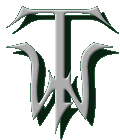

|
RecentChanges
SandBox
MessageBoard
Search
Members
Projects
Folders
Index
Preferences
Edit
NEW:


|
Northmen
Also known as "Middle Men".
A term probably used originally by the Dúnedain of Gondor to refer to their distant kin who dwelt in various realms north of the EmynMuil and east of the MistyMountains. They were said to be descended from connections of the House of Hador: those who did not accompany their kinsmen into Beleriand in the early FirstAge, and those of the Third House who did not make the journey to Númenor after the War of Wrath. In the First and Second Ages, the Northmen were spread throughout the mountains of Wilderland and in northern parts of Eriador; those in Wilderland forged a powerful alliance with the Dwarves of the region, while those in Eriador were friendly with the Men of Westernesse. These alliances were broken in the cataclysmic War of the Elves and Sauron, which forced the Northmen of Wilderland to seek refuge in ErynLasgalen and probably wiped out the Northmen of Eriador. At the beginning of the ThirdAge, after the defeat of Sauron, the Northmen of Wilderland began to spread east and south along the eaves of ErynLasgalen, and into the valley of the Celduin; another branch settled in the upper Vale of Anduin and forged a Bree-like co-existence with the Hobbits of the region. Between 1050 and 1150, Easterlings quietly began to settle in the lower Vale of Anduin, at the instigation of Sauron; some of the Northmen allied with them to attack Gondor.
In the middle ThirdAge, the term referred specifically to the folk of Rhovanion and their descendants (the Rohirrim). But other folk counted as Northmen included the Men of the Vale of Anduin (Beornings, Woodmen) and the Bardings of Dale.
The Kin-strife nothwithstanding, there had long been a special relationship between Gondor and the Northmen, whose kingdom of Rhovanion provided an effective bulwark against invasion from the East. On at least two occasions, Northmen armies rescued Gondor from obliteration at the last moment: against the Balchoth in 2510, and on the Pelennor Fields in the War of the Ring.
For more information see:
FolderCompendium FolderPeoples FolderRaces
|
| (C) The Tolkien Wiki Community | Page last changed: February 3, 2004 |